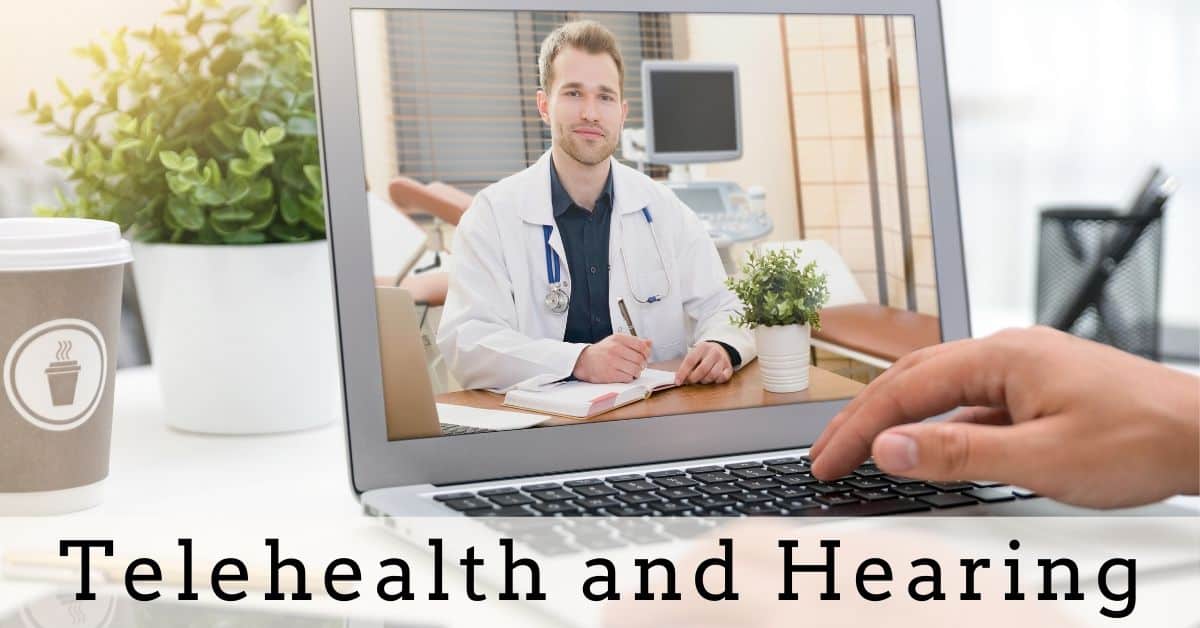- Navigating the Spectrum: Understanding Hearing Impairment Degrees - December 6, 2023
- Living with Hearing Aids in Day-to-Day Life - November 22, 2023
- A Comprehensive Guide to Hearing Aids: Exploring Styles and How They Work - November 21, 2023
Chances are, in recent months, you’ve likely heard the term telehealth. Telehealth simply means using technology to allow health care professionals to provide services to patients without the need to physically visit an office. Telehealth services have always been wonderful options for people who have mobility issues, people with limited transportation availability, or those for whom physically entering a doctor’s office is difficult.
Today, during the COVID-19 pandemic, telehealth has become an increasingly popular option for almost everyone. Audiologists and other hearing health care providers are no exception to this standard, and many of us have chosen to implement and/or expand our telehealth services so we can better serve our patients and communities while remaining safe and socially distant.
How does telehealth work?
There are many different ways that general health care professionals can provide telehealth services. Some providers hold phone consultations, while others utilize free video conferencing services such as Skype or Zoom. A third option for providing telehealth is to allow patients to visit a satellite site that is closer to the patients’ homes – and provide video consultations at these sites.
Telehealth versus teleaudiology
If telehealth is the term for all health care providers’ remote services, then teleaudiology is the term that is specific to audiologists and other hearing health care professionals.
Because audiology focuses on treating hearing loss – an invisible issue – there are some additional difficulties that audiologists and their patients face when using teleaudiology. For example, it is often quite simple for a general practitioner to look at a cell phone photo of a person’s throat and prescribe an antibiotic, all through telehealth. A dermatologist can look at a dry patch on one’s cheek and quickly prescribe a topical cream to help care for it during a quick appointment via video conference.
With audiology, it is more difficult to provide services remotely because instead of seeing issues with our eyes, we are assessing a patient’s acute ability to hear. Things like static interference, lags in video/audio, background noise, and not knowing the volume of the other person’s device can make providing health care remotely more difficult for audiologists.
Overcoming these issues with teleaudiology
Luckily, we have been able to overcome these difficulties when providing audiology services remotely. For example, hearing aid fittings and follow-up appointments can be very successful when carried out via our video conferencing software. Our patients receive a link to join the conference via text message, phone call or email.
Many of today’s modern hearing aids are equipped with technology that allows us to finely tune and adjust the hearing devices to a wearer’s needs completely remotely. Audiologists and other hearing health care professionals can also help their patients troubleshoot issues they are having with their hearing aids, walk them through basic cleaning measures they can take at home, and help patients understand how to self-adjust their hearing aids to better meet their needs.
All of these common concerns and more can be accomplished via video conferencing and teleaudiology.
Benefits of using teleaudiology
- Solutions for people with mobility issues or living in rural areas. Physically getting to the doctor’s office is very troublesome for some people. With telehealth services, there is no need for finding transportation, getting oneself out of the door, and waiting in a physical waiting room. Instead, telehealth allows people to receive their health care from the comfort of their own home.
- Hearing aids can be instantly adjusted and fine tuned. As mentioned above, most manufacturers of hearing aids have created ways for your hearing aids to be finely tuned to your specific needs – without the need for a physical visit to your audiologist.
- Stay even more connected with your audiologist. Telehealth allows the opportunity to connect to your audiologist more often. With a quick phone or video conference, your audiologist can remain continuously informed on how your hearing aids are or are not working for you.
- Completely confidential and safe. The information you share with your healthcare professional during a telehealth conference is treated with the same confidentiality as in-person appointments. Precautions are always taken to ensure connections are secure, and the things you discuss with your doctor remain between you and your doctor.
Is teleaudiology right for you?
If you are in need of hearing health care, feel free to reach out to our friendly team at The Hearing Doctor today. We will happily walk you through all of your options for teleaudiology services. We are doing our very best to continue to provide the highest quality hearing health care to our community while continuing to keep our patients safe and healthy.

